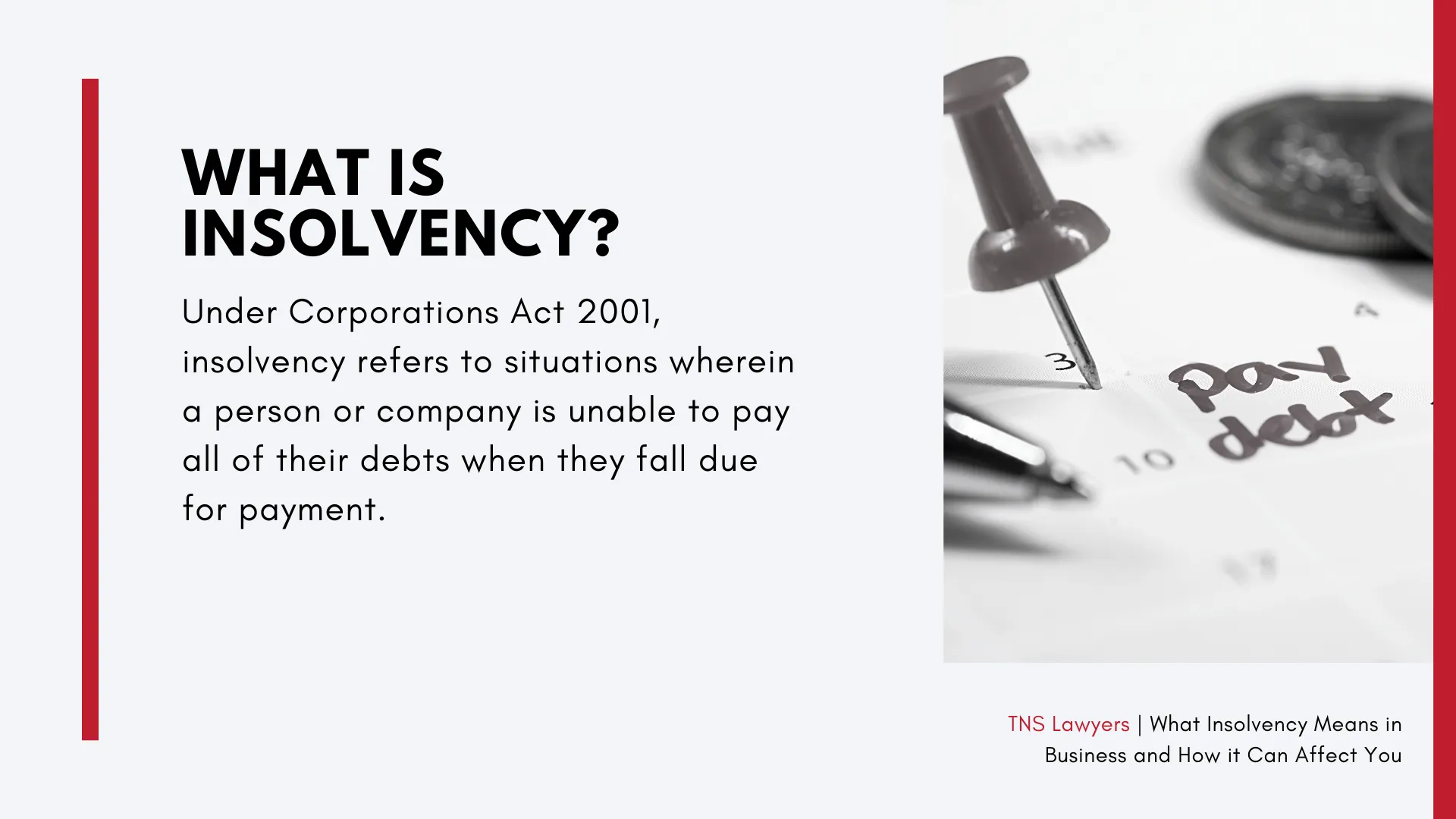Insolvency Practitioner Fundamentals Explained
Wiki Article
About Insolvency Practitioner
Table of Contents4 Simple Techniques For Insolvency Practitioner6 Easy Facts About Insolvency Practitioner ExplainedThe Only Guide for Insolvency PractitionerGetting My Insolvency Practitioner To WorkNot known Details About Insolvency Practitioner Indicators on Insolvency Practitioner You Should KnowThe Only Guide to Insolvency Practitioner
Insolvency is when liabilities are above the worth of the firm, or when a borrower can not pay the financial debts they owe. A business can become bankrupt because of a number of scenarios that bring about inadequate cash money circulation. When confronted with bankruptcy, a company or individual can contact financial institutions directly and restructure financial obligations to pay them off.Company owners might call financial institutions straight and restructure financial debts right into more manageable installations. Financial institutions are usually responsive to this approach due to the fact that they want to be settled and prevent losses, even if the repayment is on a postponed schedule.
Insolvency Practitioner Can Be Fun For Everyone
The owner develops a proposition describing exactly how the financial debt may be reorganized using price reductions or other prepare for assistance. The proposition reveals creditors how the company may produce sufficient money circulation for successful procedures while paying its financial obligations. Generally, a forgiven financial debt might be considered earnings by the Irs (INTERNAL REVENUE SERVICE).
The 9-Minute Rule for Insolvency Practitioner
The service might end up paying huge amounts of cash in problems and be incapable to continue operations. When procedures discontinue, so does the firm's earnings. Absence of revenue leads to accounts payable and creditors asking for money owed to them. Some business become insolvent due to the fact that their products or solutions don't evolve to fit consumers' altering needs.Expenses exceed revenues and expenses continue to be unsettled. Types of insolvency consist of cash-flow insolvency and balance-sheet bankruptcy. Cash-flow insolvency takes place when a firm has the assets to cover their debts yet they remain in the incorrect type, such as real estate rather than fluid funds. Balance-sheet insolvency, on the various other hand, shows an absence of possessions in any type of type to cover financial obligations.
The IRS states that an individual is financially troubled when the total obligations surpass complete properties. A bankruptcy, on the other hand, is a real court order that illustrates just how an insolvent individual or business will pay off their creditors, or how they will certainly market their assets in order to make the settlements.
go to website
6 Easy Facts About Insolvency Practitioner Shown

Comprehending the elements that can cause insolvency, such as overspending, can assist you avoid insolvency and its effects.
Insolvency Practitioner - The Facts
It is well understood that supervisors and police officers of companies (and supervisors of minimal liability business) owe fiduciary responsibilities to their companies and their shareholders (or members). These fiduciary responsibilities are defined by state statutes and, though there are variations from one state to another, they generally consist of a duty of loyalty and a duty of treatment.
The duty of treatment needs directors and police officers to exercise persistance, to make educated decisions, and to act in excellent belief to ensure that their activities are in the best interest of the firm. Past the range of this discussion, some states allow these responsibilities to be limited either by so keeping in mind in the business documents or abiding with various other needs.
Some Of Insolvency Practitioner
A lot of states define insolvency in 2 means( 1) when a firm's liabilities come to be above the amount of its assets or (2) when the firm ends up being unable to pay its financial debts as they come to be dueand embrace both meanings (Insolvency Practitioner). The change in obligations takes place due to the fact that when a business is bankrupt, there is no value in the business beyond that owed to the company's financial institutions so that the equity holders no longer have a financial risk in the businessBeware regarding giving shareholders favoritism at the cost of creditors (e.g., licensing and moneying a reward or a supply redemption). Beware regarding favoritism in between courses of investors. Clear up efforts to discover all the realities before taking a particular strategy; directors must genuinely think that any choices made are in the very best rate of interests of the company in its totality (i.e., decisions will certainly be blog here examined in hindsight in light over here of the effect of such activities on the corporation).
In any kind of bankruptcy or bankruptcy case, repayments made to certain creditors at the expense of other lenders can be clawed back, especially if there is some connection between the firm and the financial institution. Consider proposing at an annual stockholder meeting (or any kind of various other conference of investors) a resolution attesting that all previous company choices and activities taken by the supervisors and officers of the firm were taken in great faith after a workout of reasonable care.
The 25-Second Trick For Insolvency Practitioner
Fully reveal any personal or service partnerships with parties on the other side of purchases including the firm to stay clear of the look of a conflict of interest. In evaluating potential fund increasing deals or a sale of assets of the troubled company, understand that these transactions may be looked at later on because of any succeeding growth of supervisors' fiduciary tasks to consist of lenders.Report this wiki page